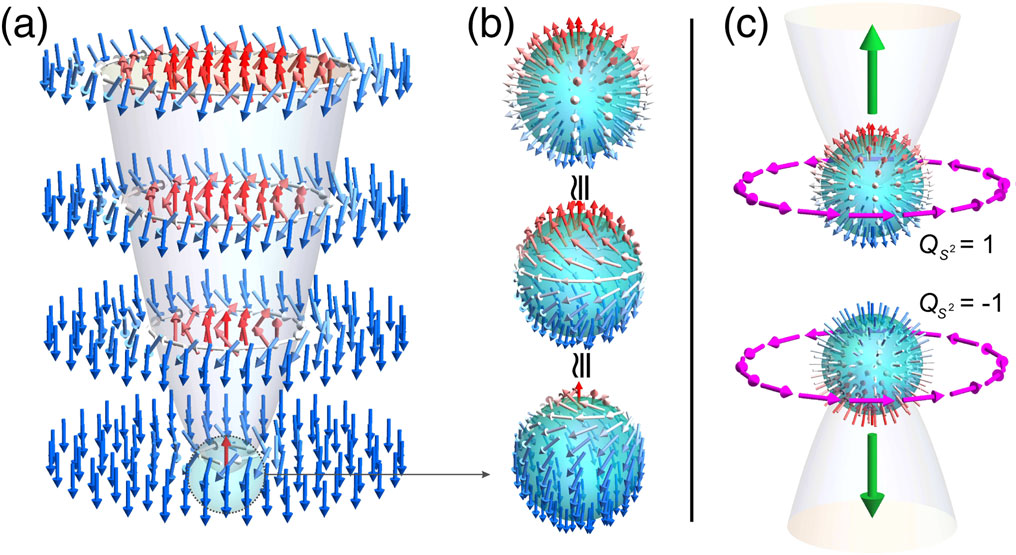Monopole-Induced Emergent Electric Fields in Ferromagnetic Nanowires
Publications
In a recent Phys. Rev. Lett. article, researchers at the Laboratory of Metal Physics and Technology (LMPT) have demonstrated that magnetization switching in ferromagnetic nanoparticles is linked to the dynamics of topological point defects, which form as Skyrmion lines and break via the creation of emergent magnetic monopoles. These move at speeds exceeding those of any other magnetic object known, and thus generate unprecedented solenoidal electric fields of several megavolts per meter.

Topological concepts have served to identify extraordinarily stable magnetization textures that play the role of controllable quasiparticles in the form of domain walls or Skyrmions, which are considered as promising candidates for information carriers in prospective racetrack-type memories. In a recent Phys. Rev. Lett. article, researchers at LMPT demonstrate that topological non-trivial magnetization textures in the form of Skyrmions, or so-called hedgehogs, play a central role even in simple magnetic nanoparticles, such as cobalt or Permalloy, which are in a single-domain state at remanence.
The authors document that irreversible magnetization switching is linked to the nucleation and ultrafast linear motion of topological hedgehog defects that give rise to unprecedented forces on the conduction electrons. These emergent electric fields are of the order of megavolts per meter and have solenoidal character, characterizing the moving hedgehogs as emergent magnetic monopoles. These objects rapidly separate with velocities in excess of 1500 m/s, which significantly exceeds the speed of domain-wall motion. These findings open new possibilities for fundamental investigations into the dynamics of topological point defects and for the development of advanced devices that exploit the physics of emergent fields, all based on simple ferromagnetic nanoparticles.
- Monopole-induced emergent electric fields in ferromagnetic nanowires, M. Charilaou, H. B. Braun, J. F. Löffler, Phys. Rev. Lett. 121, 097202 (2018). external pageArticlecall_made external pageSupplementary informationcall_made external pageVideo1call_made
- Laboratory of Metal Physics and Technology
Contour plot of the z-component of the magnetization as a function of time. The field is switched on at t = 0 and off at t = 0:15 ns. The skyrmion lines remain continuous and the magnetization returns to its original configuration within a fraction of a nanosecond. external pageVideo available in supplemental materialcall_made
Contour plot of the z-component of the magnetization as a function of time. The field is switched on at t = 0 and off at t = 0:17 ns. The skyrmion lines break, and hedgehog-antihedgehog pairs are created, with the hedgehogs rapidly separating and producing emergent electric fields. external pageVideo available in supplemental materialcall_made
